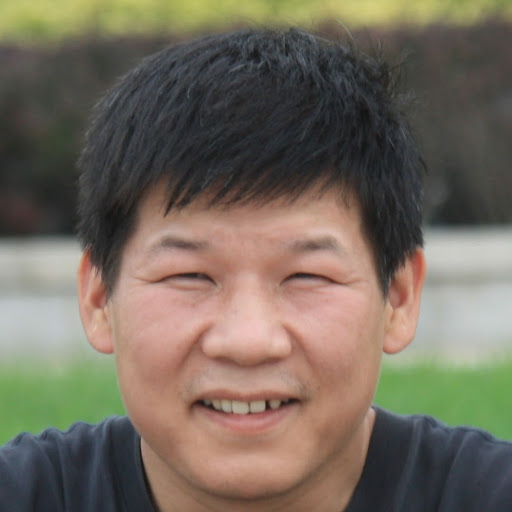Daniel T Liu
age ~84
from Somerset, NJ
- Also known as:
-
- Daniel Yang Liu
- Daniel L Yang
- Daniel T Yang
Daniel Liu Phones & Addresses
- Somerset, NJ
- 1564 Eddington Pl, San Jose, CA 95129 • 4084465079
- Cupertino, CA
- Dayhoit, KY
Work
-
Company:Awinnet techonology corporationJun 2010
-
Position:Intern
Education
-
School / High School:Pennsylvania State University- State College, PA2006
-
Specialities:Bachelor of Science in Electrical Engineering
Skills
Hardware: Logic Works • P-SPICE • Circuit design and Assembly • Microcontroller Manipulation and Program... • Oscilloscope • Digital Multi-meter /// Software: Visual... • HTML • Microsoft Office • MATLAB • FEKO
Resumes

Daniel Liu East Brunswick, NJ
view sourceWork:
Awinnet Techonology Corporation
Jun 2010 to Aug 2010
Intern ECKERD PHARMACY
East Brunswick, NJ
Jun 2007 to Sep 2007
Customer Service
Jun 2010 to Aug 2010
Intern ECKERD PHARMACY
East Brunswick, NJ
Jun 2007 to Sep 2007
Customer Service
Education:
Pennsylvania State University
State College, PA
2006 to 2012
Bachelor of Science in Electrical Engineering
State College, PA
2006 to 2012
Bachelor of Science in Electrical Engineering
Skills:
Hardware: Logic Works, P-SPICE, Circuit design and Assembly, Microcontroller Manipulation and Programming, Oscilloscope, Digital Multi-meter /// Software: Visual Studio.NET, HTML, Microsoft Office, MATLAB, FEKO
Medicine Doctors

Daniel Peng Liu
view sourceLicense Records
Daniel Liu
License #:
P28571 - Active
Category:
Emergency medical services
Issued Date:
Jun 15, 2010
Expiration Date:
Jun 30, 2017
Daniel Liu
License #:
E001223 - Expired
Category:
Emergency medical services
Issued Date:
Sep 5, 2008
Expiration Date:
May 31, 2010
Type:
Alameda County EMS Agency
Daniel F Liu
License #:
E103008 - Active
Category:
Emergency medical services
Issued Date:
Dec 30, 2013
Expiration Date:
Dec 31, 2017
Type:
Los Angeles County EMS Agency
Daniel Liu
License #:
A5000878
Category:
Airmen
Name / Title
Company / Classification
Phones & Addresses
Owner
Family Health Ctr
Health & Diet Foods-Retail
Health & Diet Foods-Retail
10041 S De Anza Blvd, Cupertino, CA 95014
4089968848
4089968848
President
YIYING MEDICAL, INC
Health/Allied Services
Health/Allied Services
6610 Camden Ave, San Jose, CA 95120
975 Redmond Ave, San Jose, CA 95120
975 Redmond Ave, San Jose, CA 95120
Owner
Family Health Center
Ret Health Store
Ret Health Store
1564 Eddington Pl, San Jose, CA 95129
10041 S De Anza Blvd, Cupertino, CA 95014
4089968848
10041 S De Anza Blvd, Cupertino, CA 95014
4089968848
President
COMPUPACK, INC
Whol Computers/Peripherals
Whol Computers/Peripherals
7101 Rainbow Dr #5, San Jose, CA 95129
4084461868
4084461868
President
VDL INTERNATIONAL CORP
Business Services at Non-Commercial Site
Business Services at Non-Commercial Site
4959 Antioch Loop, Union City, CA 94587
Branch Manager
Sun Paratech Hardwood Flooring
Public Relations Services
Public Relations Services
4959 Antioch Loop, Union City, CA 94587
5104878435
5104878435
Professional Engineer
INTEGRATED SILICON SOLUTION INC
Computer Related Services · Semiconductor and Related Device Manufacturing · Semiconductors and Related Dev
Computer Related Services · Semiconductor and Related Device Manufacturing · Semiconductors and Related Dev
2231 Lawson Ln, Santa Clara, CA 95054
4085880801, 4085880800, 4089696600, 4089697800
4085880801, 4085880800, 4089696600, 4089697800
President
FAMILY NUTRITION CORPORATION
6378 Slida Dr, San Jose, CA 95129
Us Patents
-
Extended Read Range Rfid System
view source -
US Patent:7515049, Apr 7, 2009
-
Filed:Jun 8, 2006
-
Appl. No.:11/449084
-
Inventors:Arun Sharma - Cupertino CA, US
Daniel Fritschen - Sunnyvale CA, US
Daniel Liu - San Francisco CA, US
Norma Riley - Fremont CA, US -
Assignee:Asyst Technologies, Inc. - Fremont CA
-
International Classification:G08B 13/14
-
US Classification:3405726, 3405721, 340 101
-
Abstract:The present invention generally comprises an apparatus that allows an RFID antenna to obtain information from an RFID tag mounted on a container. The apparatus reproduces the RF field generated by the antenna to a location proximate to the RFID tag. In one embodiment, the apparatus comprises a pickup device and a reproduction device electrically coupled with the pickup device. In another embodiment, the apparatus comprises at least one magnetic rod, which creates a magnetic path for the RF field to travel between the antenna and the RFID tag. In another embodiment, the apparatus comprises a pickup antenna and a reproduction antenna for transmitting the RF signal from the antenna proximate to the RFID tag.
-
High Density Spin-Transfer Torque Mram Process
view source -
US Patent:7884433, Feb 8, 2011
-
Filed:Oct 31, 2008
-
Appl. No.:12/290495
-
Inventors:Tom Zhong - Saratoga CA, US
Rongfu Xiao - Fremont CA, US
Adam Zhong - Milpitas CA, US
Wai-Ming Johnson Kan - San Ramon CA, US
Daniel Liu - San Jose CA, US -
Assignee:MagIC Technologies, Inc. - Milpitas CA
-
International Classification:H01L 29/82
-
US Classification:257421, 257774, 257E29323, 257E23145
-
Abstract:A STT-MRAM integration scheme is disclosed wherein the connection between a MTJ and CMOS metal is simplified by forming an intermediate via contact (VAC) on a CMOS landing pad, a metal (VAM) pad that contacts and covers the VAC, and a MTJ on the VAM. A dual damascene process is performed to connect BIT line metal to CMOS landing pads through VAC/VAM/MTJ stacks in a device region, and to connect BIT line connection pads to CMOS connection pads through BIT connection vias outside the device region. The VAM pad is a single layer or composite made of Ta, TaN, or other conductors which serves as a diffusion barrier, has a highly smooth surface for MTJ formation, and provides excellent selectivity with refill dielectric materials during a chemical mechanical polish process. Each VAC is from 500 to 3000 Angstroms thick to minimize additional circuit resistance and minimize etch burden.
-
Method Of High Density Field Induced Mram Process
view source -
US Patent:7919407, Apr 5, 2011
-
Filed:Nov 17, 2009
-
Appl. No.:12/590945
-
Inventors:Tom Zhong - Saratoga CA, US
Wai-Ming Johnson Kan - San Ramon CA, US
Daniel Liu - San Jose CA, US
Adam Zhong - Milpitas CA, US -
Assignee:MagIC Technologies, Inc. - Milpitas CA
-
International Classification:H01L 21/4763
-
US Classification:438622, 438 3, 438614, 438618, 438620, 438674, 257E21665
-
Abstract:Described herein are novel, cost effective and scalable methods for integrating a CMOS level with a memory cell level to form a field induced MRAM device. The memory portion of the device includes N parallel word lines, which may be clad, overlaid by M parallel bit lines orthogonal to the word lines and individual patterned memory cells formed on previously patterned electrodes at the N×M intersections of the two sets of lines. The memory portion is integrated with a CMOS level and the connection between levels is facilitated by the formation of interconnecting vias between the N×M electrodes and corresponding pads in the CMOS level and by word line connection pads in the memory device level and corresponding metal pads in the CMOS level. Of particular importance are process steps that replace single damascene formations by dual damascene formations, different process steps for the formation of clad and unclad word lines and the formation of patterned electrodes for the memory cells prior to the patterning of the cells themselves.
-
High Density Spin-Transfer Torque Mram Process
view source -
US Patent:8183061, May 22, 2012
-
Filed:Feb 7, 2011
-
Appl. No.:12/931648
-
Inventors:Tom Zhong - Saratoga CA, US
Rongfu Xiao - Fremont CA, US
Adam Zhong - Milpitas CA, US
Wai-Ming Johnson Kan - San Ramon CA, US
Daniel Liu - San Jose CA, US -
Assignee:MagIC Technologies, Inc. - Milpitas CA
-
International Classification:H01L 21/441
-
US Classification:438 3, 257421, 257E21577, 257E21579, 438637
-
Abstract:A STT-MRAM integration scheme is disclosed wherein the connection between a MTJ and CMOS metal is simplified by forming an intermediate via contact (VAC) on a CMOS landing pad, a metal (VAM) pad that contacts and covers the VAC, and a MTJ on the VAM. A dual damascene process is performed to connect BIT line metal to CMOS landing pads through VAC/VAM/MTJ stacks in a device region, and to connect BIT line connection pads to CMOS connection pads through BIT connection vias outside the device region. The VAM pad is a single layer or composite made of Ta, TaN, or other conductors which serves as a diffusion barrier, has a highly smooth surface for MTJ formation, and provides excellent selectivity with refill dielectric materials during a chemical mechanical polish process. Each VAC is from 500 to 3000 Angstroms thick to minimize additional circuit resistance and minimize etch burden.
-
High Density Spin-Transfer Torque Mram Process
view source -
US Patent:8324698, Dec 4, 2012
-
Filed:Jan 4, 2011
-
Appl. No.:12/930333
-
Inventors:Tom Zhong - Saratoga CA, US
Rongfu Xiao - Fremont CA, US
Adam Zhong - Milpitas CA, US
Wai-Ming Johnson Kan - San Ramon CA, US
Daniel Liu - San Jose CA, US -
Assignee:MagIC Technologies, Inc. - Milpitas CA
-
International Classification:H01L 29/82
-
US Classification:257421, 257774, 257E29323, 257E23145
-
Abstract:A STT-MRAM integration scheme is disclosed wherein the connection between a MTJ and CMOS metal is simplified by forming an intermediate via contact (VAC) on a CMOS landing pad, a metal (VAM) pad that contacts and covers the VAC, and a MTJ on the VAM. A dual damascene process is performed to connect BIT line metal to CMOS landing pads through VAC/VAM/MTJ stacks in a device region, and to connect BIT line connection pads to CMOS connection pads through BIT connection vias outside the device region. The VAM pad is a single layer or composite made of Ta, TaN, or other conductors which serves as a diffusion barrier, has a highly smooth surface for MTJ formation, and provides excellent selectivity with refill dielectric materials during a chemical mechanical polish process. Each VAC is from 500 to 3000 Angstroms thick to minimize additional circuit resistance and minimize etch burden.
-
Method Of Spin Torque Mram Process Integration
view source -
US Patent:8456883, Jun 4, 2013
-
Filed:May 29, 2012
-
Appl. No.:13/482157
-
Inventors:Daniel Liu - San Jose CA, US
-
Assignee:Headway Technologies, Inc. - Milpitas CA
-
International Classification:H01L 21/8239
G11C 5/08
G11C 11/15
H01L 21/8234
H01L 27/22 -
US Classification:365 66, 365158, 365171, 257369, 257E27108, 257E21665, 257E21627, 438 3, 438200
-
Abstract:CMOS devices are provided in a substrate having a topmost metal layer comprising metal landing pads and metal connecting pads. A plurality of magnetic tunnel junction (MTJ) structures are provided over the CMOS devices and connected to the metal landing pads. The MTJ structures are covered with a dielectric layer that is polished until the MTJ structures are exposed. Openings are etched in the dielectric layer to the metal connecting pads. A seed layer is deposited over the dielectric layer and on inside walls and bottom of the openings. A copper layer is plated on the seed layer until the copper layer fills the openings. The copper layer is etched back and the seed layer is removed. Thereafter, an aluminum layer is deposited over the dielectric layer, contacting both the copper layer and the MTJ structures, and patterned to form a bit line.
-
Hybrid Directory And Snoopy-Based Coherency To Reduce Directory Update Overhead In Two-Level Memory
view source -
US Patent:20200356482, Nov 12, 2020
-
Filed:May 7, 2019
-
Appl. No.:16/405691
-
Inventors:- Santa Clara CA, US
Jeffrey Baxter - Cupertino CA, US
Sai Prashanth Muralidhara - Portland OR, US
Sharada Venkateswaran - San Francisco CA, US
Daniel Liu - Walnut Creek CA, US
Nishant Singh - Bengaluru, IN
Bahaa Fahim - Santa Clara CA, US
Samuel D. Strom - Folsom CA, US -
International Classification:G06F 12/0817
-
Abstract:A processor includes one or more cores having cache, a cache home agent (CHA), a near memory controller, to near memory, and a far memory controller, which is to: receive a first memory read operation from the CHA directed at a memory address; detect a miss for the first memory address at the near memory; issue a second memory read operation to the far memory controller to retrieve a cache line, having first data, from the memory address of far memory; receive the cache line from the far memory controller in response to the second memory read operation; and send the cache line to the CHA with a forced change to a directory state of the cache line at the CHA, the forced change to cause the CHA to snoop remote sockets to maintain data coherence for the cache line in an absence of directory state in the far memory.
-
Effective Chip Yield For Artificial Intelligence Integrated Circuit With Embedded Memory
view source -
US Patent:20200201697, Jun 25, 2020
-
Filed:Dec 21, 2018
-
Appl. No.:16/230020
-
Inventors:- Milpitas CA, US
Daniel H. LIU - San Jose CA, US
Wenhan Zhang - Mississauga, CA
Hualiang Yu - San Jose CA, US -
Assignee:Gyrfalcon Technology Inc. - Milpitas CA
-
International Classification:G06F 11/07
G11C 29/18
G06N 3/063
G11C 29/44 -
Abstract:This disclosure relates to testing of integrated artificial intelligence (AI) circuit with embedded memory to improve effective chip yield and to mapping addressable memory segments of the embedded memory to multilayer AI networks at the network level, layer level, parameter level, and bit level based on bit error rate (BER) of the addressable memory segments. The disclosed methods and systems allows for deployment of one or more multilayer AI networks in an AI circuit with sufficient model accuracy even when the embedded memory has an overall BER higher than a preferred overall threshold.
Youtube
Myspace

Daniel Liu
view sourceFlickr
Plaxo

Daniel Liu
view sourceCisco Systems

Daniel Liu
view sourceBeijing

Daniel Liu
view sourceCalgary, Alberta, CanadaIT - Developer at TransCanada
Classmates

Daniel Liu
view sourceSchools:
Adams High School Los Angeles CA 1990-1994
Community:
Karen Wagoner, Sonia Suarez

Daniel Liu
view sourceSchools:
St. Gerard High School St. Augustine FL 1997-2001

Daniel Liu
view sourceSchools:
Robert Healy Elementary School Chicago IL 1985-1994
Community:
Carol Leganski, Karen Krishen, Andrea Ward

Daniel Liu
view sourceSchools:
Hazlet Middle School Hazlet NJ 1999-2003
Community:
Christopher Aagre, Jess Toal, Vincent Chiappone, Brian Baumann, Heather Brucato, Stephanie Hosier, Nicole Kruk, Ryan Lynch, Martin Grimm, Katie Neely, Tad Macdaniels

Daniel Liu
view sourceSchools:
Carrollton Christian High School Carrollton TX 2000-2004
Community:
Rene Routsong, Emily Mcwilliams, Sunil Sundaran, Josh Casey, Cory Tooke, Haresh Patel, Erin Ewing, Jennifer Broom, Richard Poindexter, Gregg Jones

Daniel Liu | Sentinel Sec...
view source
Rutgers University - Livi...
view sourceGraduates:
Matthew Wisner (1990-1994),
Chris Mesopotanese (1995-1998),
Daniel Liu (1996-2002),
Mary Lynne Hansen (1978-1980)
Chris Mesopotanese (1995-1998),
Daniel Liu (1996-2002),
Mary Lynne Hansen (1978-1980)

St. Gerard High School, S...
view sourceGraduates:
Ronette Johnson (1999-2003),
Daniel Liu (1997-2001),
Marlayna Hale (1989-1993),
Michelle Demeglio (1997-2001)
Daniel Liu (1997-2001),
Marlayna Hale (1989-1993),
Michelle Demeglio (1997-2001)
Googleplus

Daniel Liu
Work:
#waywire - Director of Photography / Motion Graphic Designer (2012-2013)
G-Unit Records - Video Intern (2011-2011)
City Stage - Sound Stage Intern (2011-2011)
Le Jardin Academy - Teacher's Assistant (2008-2008)
New York University - Teacher's Assistant (2011-2012)
G-Unit Records - Video Intern (2011-2011)
City Stage - Sound Stage Intern (2011-2011)
Le Jardin Academy - Teacher's Assistant (2008-2008)
New York University - Teacher's Assistant (2011-2012)
Education:
New York University - Film and Television
Relationship:
Single
Tagline:
A captivatingly creative conundrum.
Bragging Rights:
Won $200 freshmen year playing Super Smash Bros. Brawl.

Daniel Liu
Work:
SGV International - Telecom Consultant (2012)
Lockard & White - Telecom Engineer (2006-2012)
Lockard & White - Telecom Engineer (2006-2012)
Education:
Texas A&M University - Electronics Engineering Technology

Daniel Liu
Education:
University of Wisconsin-Madison - History of Science, Reed College - History
About:
Another casualty of applied metaphysics...
Tagline:
Another casualty of applied metaphysics...

Daniel Liu
Education:
Pennsylvania State University - Finance

Daniel Liu
Education:
NTUST - RFIC

Daniel Liu
Education:
University of California, Los Angeles

Daniel Liu
Work:
BBAC

Daniel Liu
Work:
CGB

Daniel Liu Beltran
view source
Daniel J. Liu
view source
Daniel Liu
view source
Daniel Liu
view source
Daniel Liu
view source
Daniel Aye Liu
view source
Daniel Liu
view source
Daniel Liu Sig Xin
view sourceGet Report for Daniel T Liu from Somerset, NJ, age ~84






